Babka Wielkanocna, Drożdżowa
Polish Easter Babka Cake with Rum-Soaked Raisins
How to pronounce it?
bab-kah viel-ka-notzna
‘Play’ to hear:
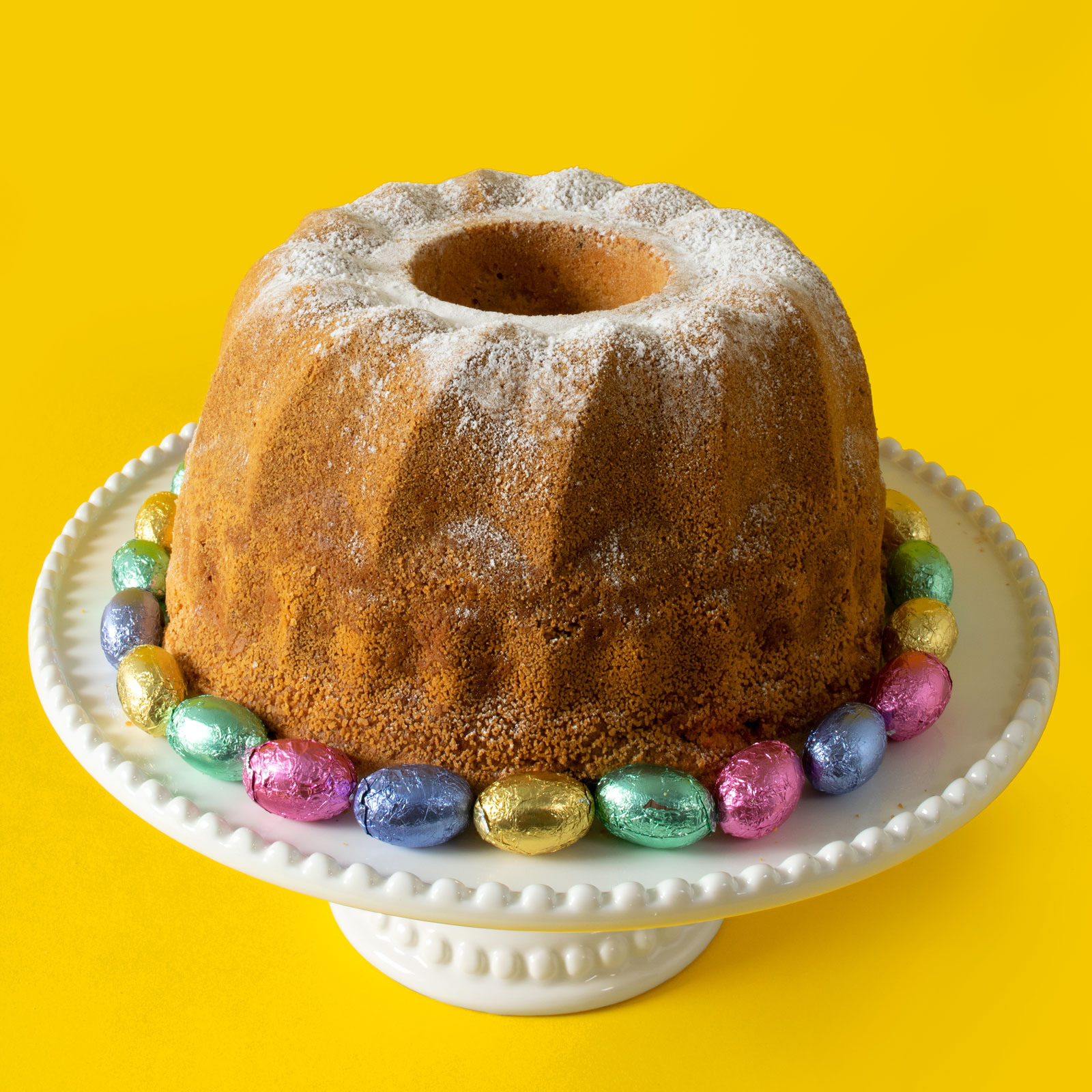
This Polish-style Babka recipe is easy to make and so beautiful to serve! It’s jam-packed with rum-soaked raisins, hiding like little gems inside a rich (8 yolks!), yeast-based cake.
Baked in a signature Bundt mold, Babka doubles as a centrepiece on nearly every Polish Easter table.
For the full list of ingredients & detailed instructions, please see the recipe card at the end of this post. But before you scroll, there’s important stuff to know below.
Go ahead and bookmark this recipe now – it will serve you well next time you’re craving a flavourful, rich cake.
If you’re in a springtime mood, check out other Polish Easter recipes over here.
Do you need any special ingredients or equipment to make this Polish Easter Babka?
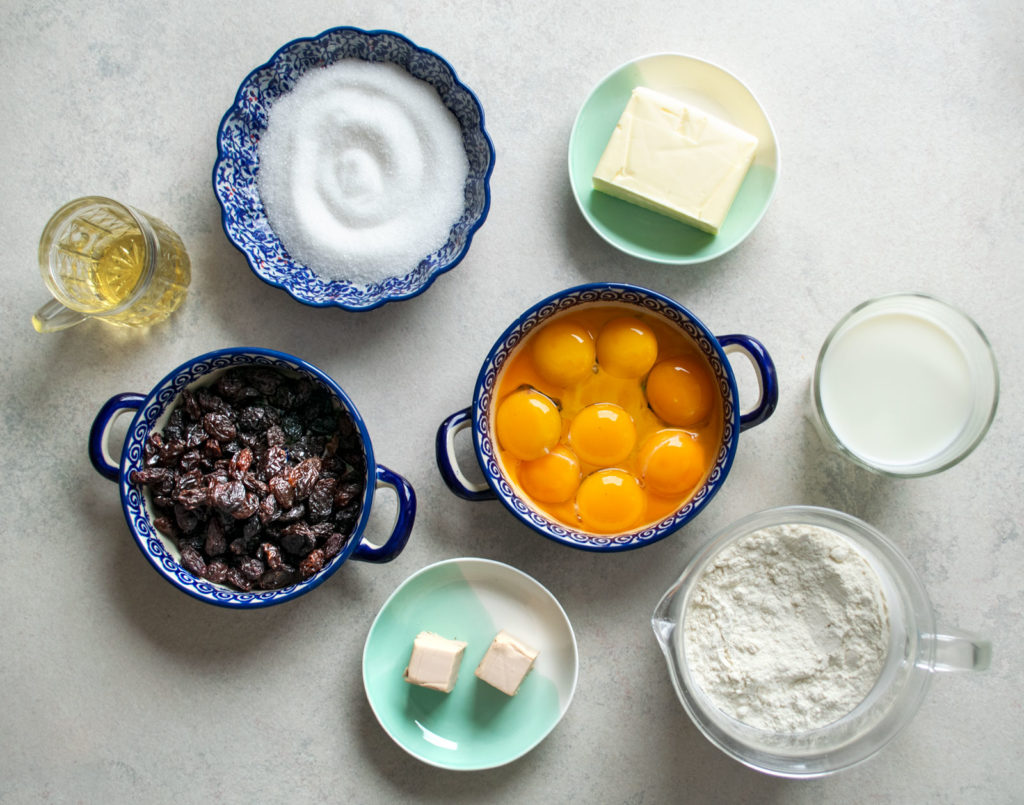
Most of the ingredients should be available in any major supermarket. When baking, I find most success using fresh yeast – but dried yeast should work here too.
Equipment-wise, you’ll need a standing (planetary) mixer, or at least a hand-held one.
You’ll also need a tall, fluted Bundt mold. For this recipe, it should be large enough to hold 3 litres (roughly 3 liquid quarts) of dough.
If you’re not sure how big your mold is, you can measure it by pouring water in and checking how much liquid it will hold. If yours is too small – don’t worry, just reduce the amount of each ingredient or bake the excess dough in another, smaller mold.
How to make this Polish Easter Babka?
Here are some key steps. For the full recipe, refer to the recipe card below.
Step 1
Crumble the fresh yeast into a bowl. Add in two tablespoons of sugar and half a cup of flour.
Pour warm milk in, and blend everything together with a fork. Cover the bowl with a cloth and set aside in a warm place.
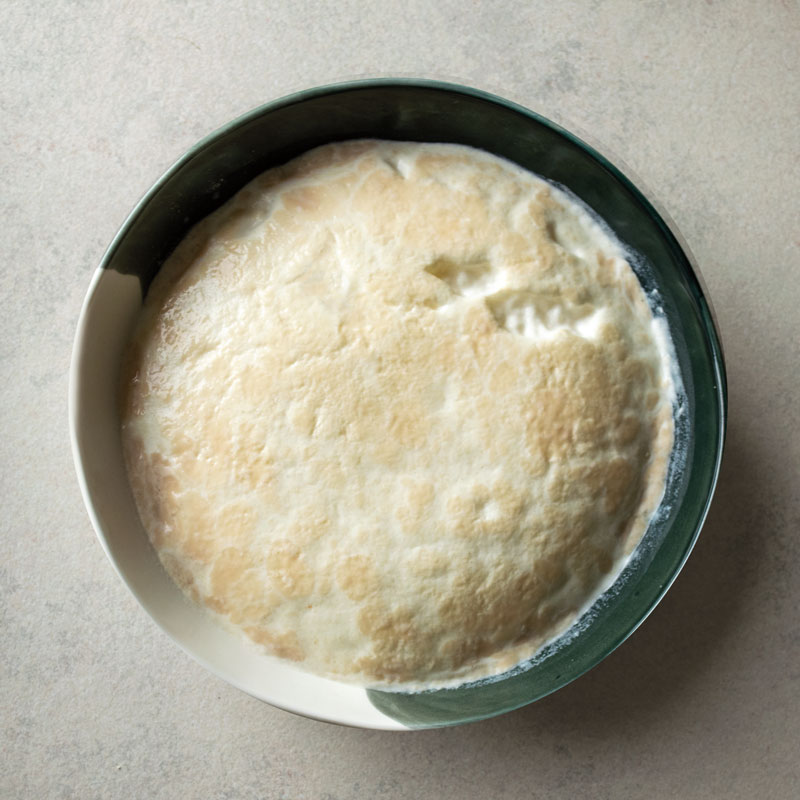
Step 2
Add egg yolks to the rest of the sugar and use a mixer to beat them together – until light and fluffy.
Add in the rest of the flour to the beaten yolk mass. Next, add the yeast mixture we have left aside earlier on.
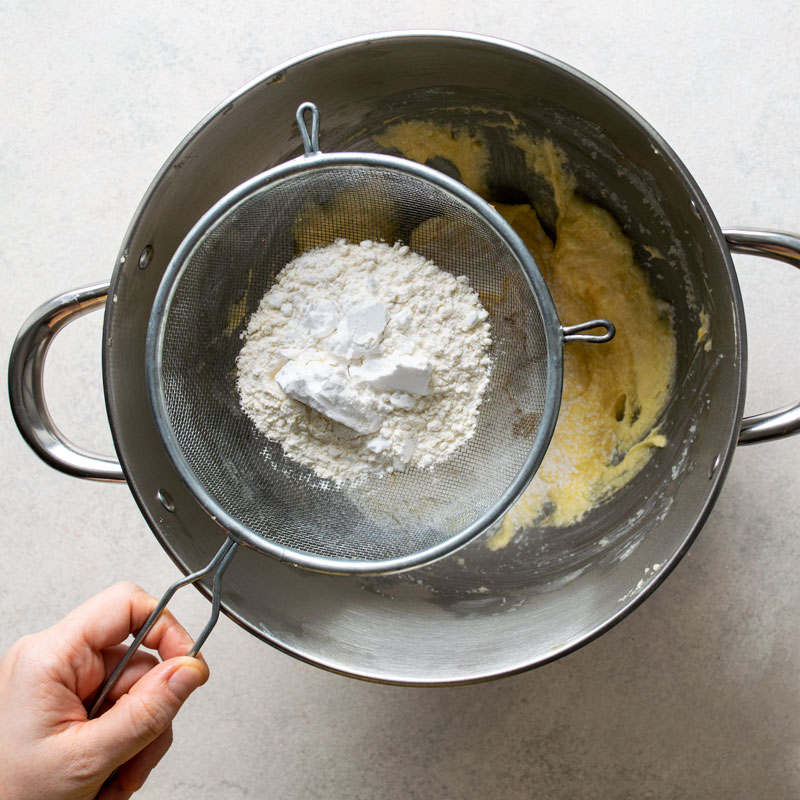
Step 3
Knead together, until the dough turns elastic. As you go, add in melted butter and a pinch of salt. At the very end of kneading, add rum-soaked raisins.
Cover and set aside to rise for an hour and a half.
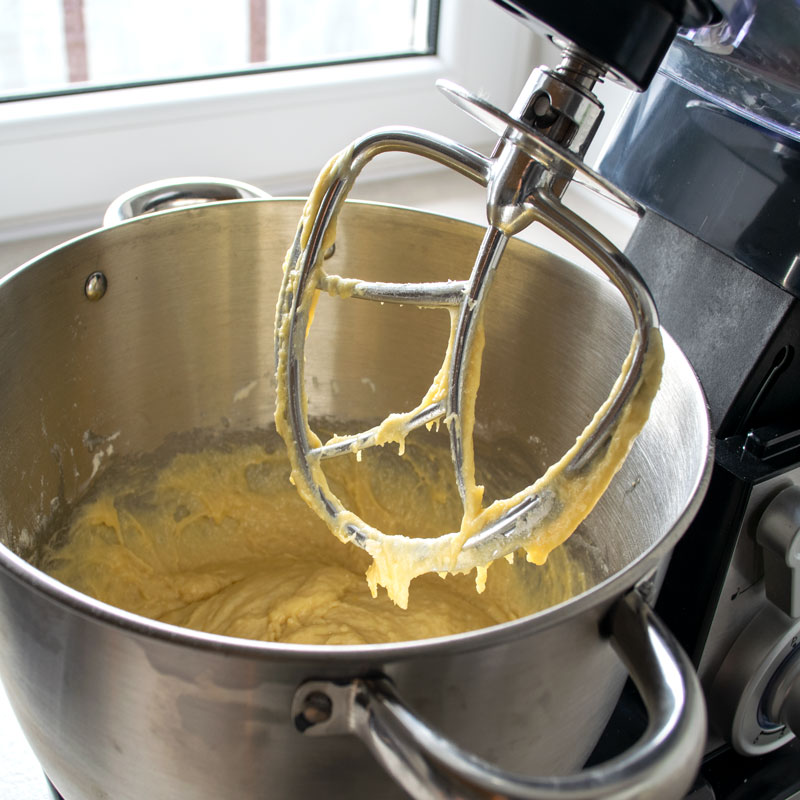
Step 4
Grease the bundt mould generously with butter and dust heavily with breadcrumbs. Move the dough into the mould, making sure it only occupies half of its size. Set aside to rise for half an hour.
Bake for 60 minutes in 160°C (320°F).
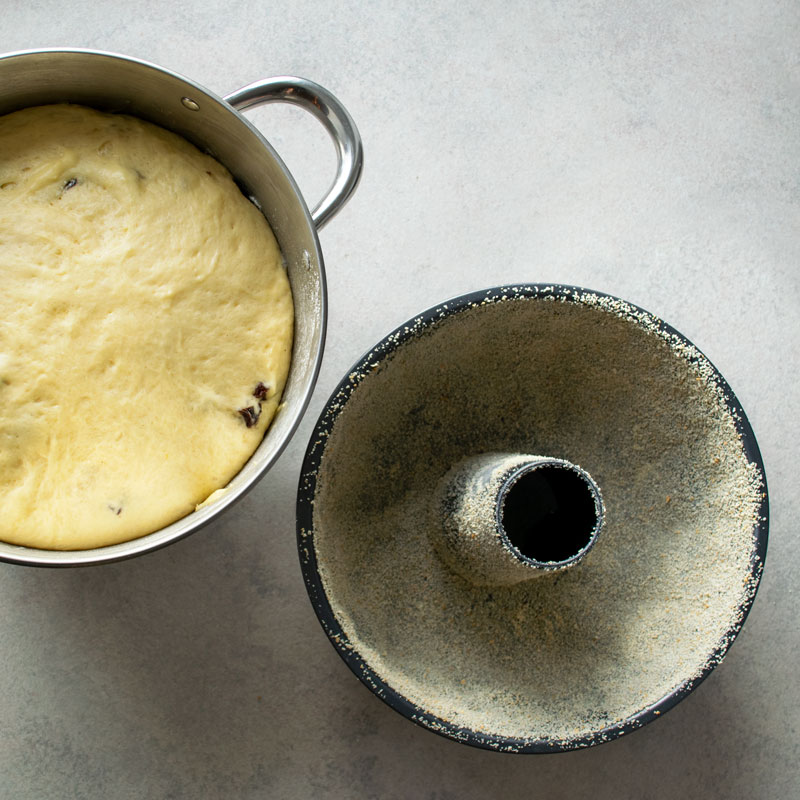
What could you serve with this Polish Easter Babka?
This classic Yeast Babka is mostly enjoyed plain, but some enjoy it with a spread of butter and a dollop of fruit jam.
As a Polish Easter dessert, Babka is often served alongside other celebratory desserts such as Mazurek Cake, Pascha (a dessert made of Twaróg cheese), and Sernik (Cheesecake). It pairs nicely with hot beverages such as tea or coffee.
Can you bake this Babka another way?
Yes, you can:
- Add additional ingredients, such as grated orange zest, chopped nuts and/or chopped dried fruit. Add them into the dough prior to baking.
- If you’re not feeling confident with yeast, try this Babka Piaskowa (‘Sand cake’ Babka) recipe instead.
What diets is this Easter Babka suitable for?
If you’re on a low-carb, dairy- and/or gluten-free diet – this recipe isn’t for you.
Can I freeze this Polish Easter Babka?
Yes, but don’t freeze the whole thing. It’s better to freeze each slice individually: wrap each piece in cling film (or freezer-friendly bag), and label with today’s date. Consume within 2-3 months.
To thaw, remove a slice of babka from the freezer and let it defrost at room temperature. It’s worth doing so overnight, or for at least 5 hours.
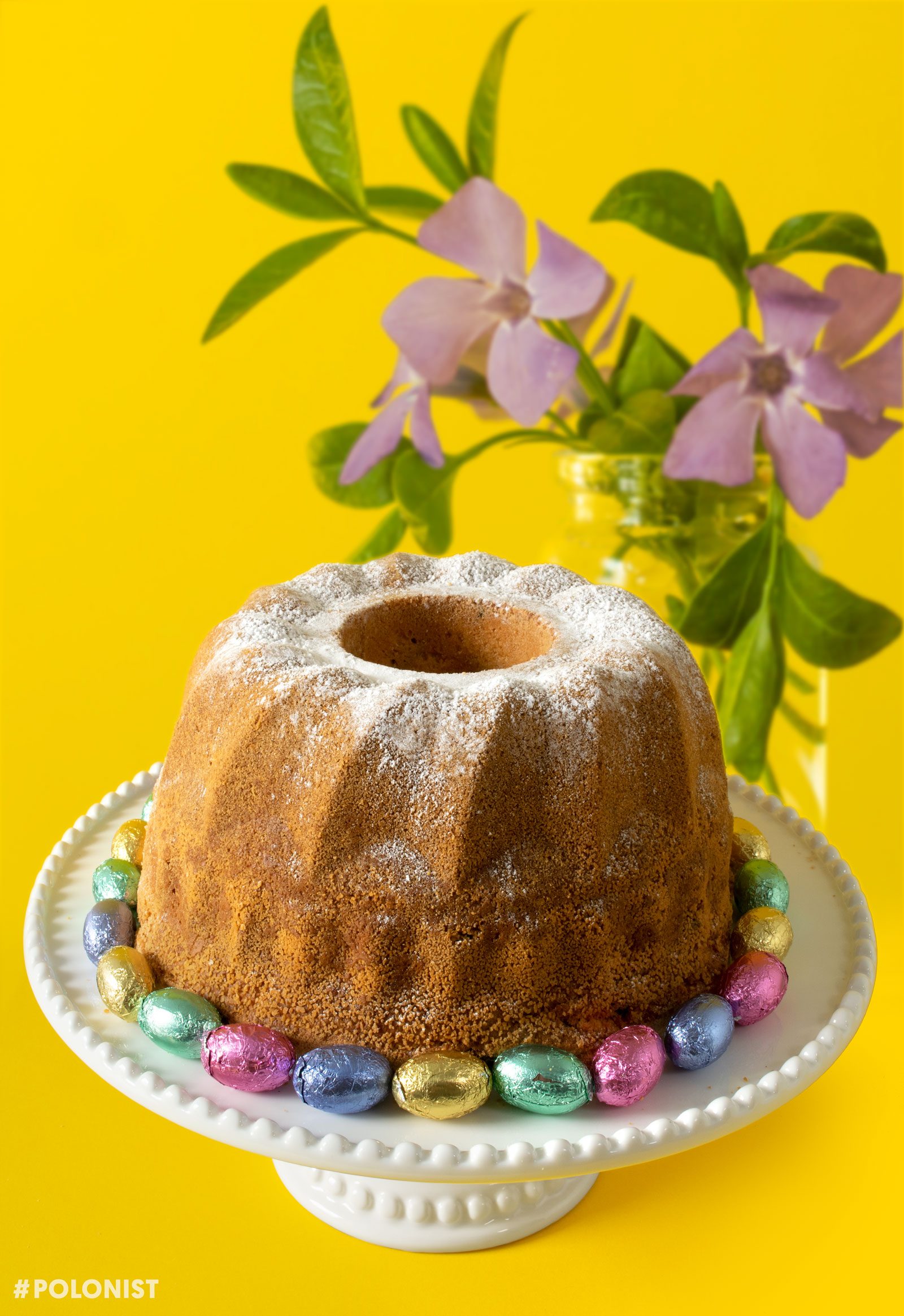
Traditional Polish Easter Babka Cake with Rum-Soaked Raisins
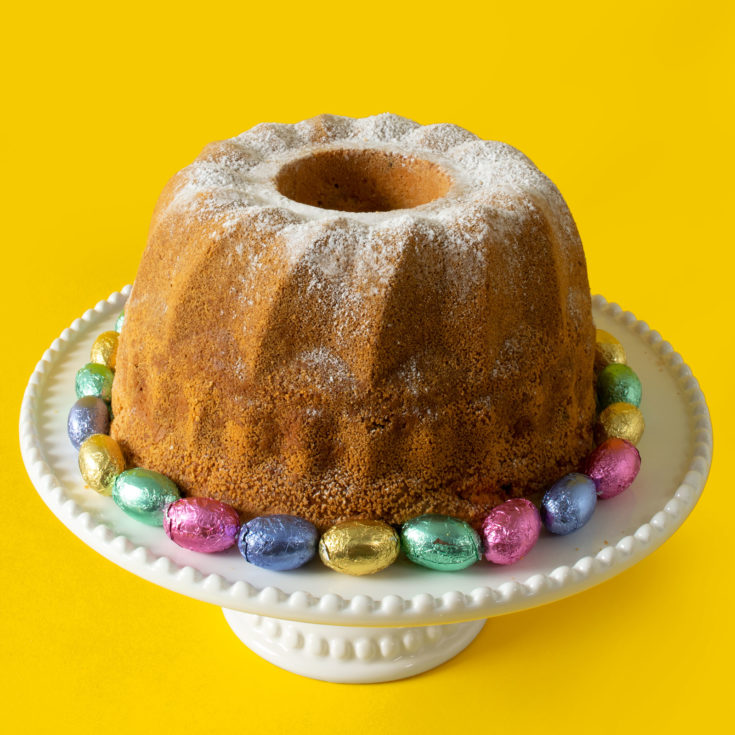
This yeast-based Polish Easter Babka recipe is intended for a 3 litre Bundt mold (that's roughly 3 liquid quarts). If yours is smaller, adjust the amount of the ingredients accordingly.
Ingredients
For Babka cake
- 1 cup (160 g) raisins
- 2 tbsp (1 shot, 30 ml) rum, can substitute with citrus liqueur
- 1 oz (28-30 g) fresh yeast, can substitute with 14g dried yeast
- ¾ cup (150 g) sugar
- 4 cups (17.6 oz, 500 g) all-purpose flour
- 1+1/5 cup (300 ml) warm milk
- 8 egg yolks
- 1 stick (113-120 g) butter, melted and cooled
- pinch of salt
- breadcrumbs, for dusting the mold
- icing/powdered sugar, for sprinkling
For Citrus Icing (optional)
- 1 cup (100g) powdered sugar
- lemon, lime or orange juice
Instructions
- Drop the raisins into a sieve and pour boiling water over them (generously!).
- Transfer raisins into a bowl and pour in the rum. I used a walnut-infused nalewka (Polish-style spirit), but a zesty citrus liqueur would work beautifully as well. Set aside to soak for at least 30 minutes.
- Crumble fresh yeast into a bowl. Add in 2 tablespoons of sugar and ½ cup of flour. Pour warm milk in, and blend everything together with a fork. Cover the bowl with a cloth and set aside in a warm place (if it’s quite warm in the kitchen, just leaving it on a worktop will do the trick).
- Add egg yolks to the rest of the sugar and use a mixer to beat them together - until light and fluffy.
- In your mixer, swap the whisk attachment for the flat beater/paddle or a dough hook.
- Add in the rest of the flour to the beaten yolk mass. Next, add the yeast mixture we have left aside earlier on.
- Turn the mixer on, and knead until the dough turns elastic and becomes less sticky (it took roughly 15 minutes in my case). As you go, add in melted butter and a pinch of salt.
- At the very end of kneading, add rum-soaked raisins.
- Cover the bowl with a cloth or a cling film, and leave in a warm place. Allow it to double its size (that takes roughly 1.5h).
- As you wait, grease the bundt mold generously with butter and dust heavily with breadcrumbs (or finely crushed digestive biscuits). Leave it to chill in the fridge (that trick makes it easier to release babka from the mold later on).
- Move the dough into the mold, making sure it only occupies half of its size. If you have some dough left over, just use another mold to bake it (a loaf pan does the job).
- Cover with a cloth yet again and leave the dough to rise for another 30 minutes.
- Preheat the oven to 160°C (320°F) without fan-assist.
- Bake for 60 minutes. To check if it’s done, poke the babka with a toothpick - if it comes out dry, the cake is ready.
- Carefully remove the mold while the cake is still hot. Let it cool down completely.
- Sprinkle with icing sugar, or cover with citrus icing.
For Citrus Icing (optional):
- Sift icing sugar into a small bowl, gradually add citrus juice, a few drops at a time.
- Blend everything together with a fork, monitoring the changing texture. Once the icing turns nice and thick, pour it over the babka. If it’s too thick - add more juice. If it’s too runny - add more powdered sugar.
Notes
This recipe is adapted from the Polish cookbook “Na słodko. Domowa piekarnia” (“Sweet-style. Home bakery”) by Piotr Kucharski, published by Pascal in 2015, ISBN 9788376426235. I’ve altered the proportions ever-so-slightly, to make baking easier.
Nutrition Information:
Yield:
8Serving Size:
1Amount Per Serving: Calories: 498Total Fat: 9gSaturated Fat: 4gTrans Fat: 0gUnsaturated Fat: 5gCholesterol: 197mgSodium: 143mgCarbohydrates: 85gFiber: 3gSugar: 23gProtein: 16g
Polonist is reader-supported. When you buy through links on our site, we may earn a small affiliate commission. Learn more
Recipe Information
Filed under:
Alternative traditional/regional names:
Baba Drożdżowa
Also known / Misspelt internationally as:
Polish Easter Bread, Polish Bundt Cake
Tested by:
First published on:
Recipe by / Adapted from:
This recipe is adapted from the Polish cookbook “Na słodko. Domowa piekarnia” (“Sweet-style. Home bakery”) by Piotr Kucharski, published by Pascal in 2015, ISBN 9788376426235. I’ve altered the proportions ever-so-slightly, to make baking easier.
Story by:
Bibliography / References: